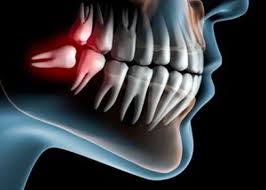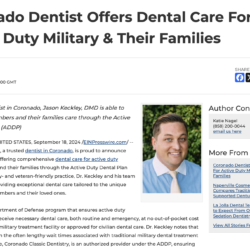Wisdom Tooth Removal
Quick Facts About Wisdom Tooth Removal:
- Purpose: Wisdom tooth removal is performed to address or prevent problems like overcrowding, impaction, infections, and pain.
- Procedure:Wisdom tooth removal can be done under local anesthesia with or without additional sedation, depending on the complexity and patient preference.
- Recovery: No downtime necessary
- Primary Benefits: Recovery time varies but generally involves a few days of swelling and discomfort, managed with pain relievers and ice packs. Most people fully recover within a week or two.
- Aftercare: Post-operative care includes eating soft foods, avoiding strenuous activity, and keeping the area clean to prevent infection.
 Wisdom tooth extraction is a common procedure that the majority of people need to undergo at some point during their life. The wisdom teeth are located in the back of the mouth, and they are generally considered unnecessary—and in many cases disruptive or damaging—to the normal function of your teeth and the maintenance of your oral health. A variety of concerns can arise when wisdom teeth erupt, a process which typically occurs between the late teens and mid-twenties. Insufficient mouth space can lead to crooked or irregular eruption as well as impaction, which occurs when the teeth are unable to emerge from beneath the gums and bone. Even in cases where the mouth does have sufficient room to house the fully-erupted wisdom teeth, it can still be a good idea to remove them as a preventative measure.
Wisdom tooth extraction is a common procedure that the majority of people need to undergo at some point during their life. The wisdom teeth are located in the back of the mouth, and they are generally considered unnecessary—and in many cases disruptive or damaging—to the normal function of your teeth and the maintenance of your oral health. A variety of concerns can arise when wisdom teeth erupt, a process which typically occurs between the late teens and mid-twenties. Insufficient mouth space can lead to crooked or irregular eruption as well as impaction, which occurs when the teeth are unable to emerge from beneath the gums and bone. Even in cases where the mouth does have sufficient room to house the fully-erupted wisdom teeth, it can still be a good idea to remove them as a preventative measure.
Here at Coronado Classic Dentistry, we strive to offer our patients the most comfortable, efficient, and compassionate care possible. In addition to his extensive experience with wisdom tooth removal, Dr. Jason Keckley is also skilled in sedation dentistry practices. We understand that dental procedures—especially oral surgery—can cause a high degree of anxiety. Dr. Keckley will work closely with you in order to help alleviate your concerns and ensure your treatment is as smooth and relaxing as possible.
- What are Wisdom Teeth?
- Wisdom Teeth Impaction
- Reasons to Remove Wisdom Teeth
- Wisdom Tooth Removal Procedure
- Wisdom Tooth Removal Recovery
What Are Wisdom Teeth?
Wisdom teeth are typically the final set of molars, or back teeth, to erupt from beneath the gums. Most people’s wisdom teeth become apparent between the ages of 17 and 25, though this can vary. They are generally considered unnecessary to both proper mouth function and oral health, and the majority of people end up having them removed for one reason or another. One of the primary problems associated with wisdom teeth is that many people’s mouths simply do not have adequate room to accommodate their growth. As a result, the teeth either erupt at irregular angles, which can negatively affect the surrounding teeth, or they become impacted, meaning that they erupt only partially or not at all. In addition to being painful, these problems can adversely affect your overall oral health, leading to issues including gum disease, jawbone deterioration, and bite misalignment.
What Are Impacted Wisdom Teeth?
Wisdom tooth impaction occurs when the emerging teeth become fully or partially trapped beneath the gum tissue and/or jawbone. This can lead to gum swelling and bleeding, headaches, bad breath, and general mouth discomfort. However, some patients may not experience any symptoms. There are three broad categories of impaction:
- Soft tissue impaction: Soft tissue impaction occurs when the crowns, or tops, of the wisdom teeth have emerged from the jawbone, but are still fully or partially covered by gum tissue.
- Partial bony impaction: Partial bony impaction occurs when the wisdom teeth have partially emerged from the jawbone. The rest of the tooth remains beneath the gum tissue and is impacted within the jawbone.
- Full bony impaction: Full bony impaction occurs when the entire wisdom tooth remains inside of the jawbone.
Dr. Keckley will examine your mouth, take digital X-rays, and determine what type of impaction you are experiencing. If you choose to move forward with extraction, he will develop a treatment plan based on your unique circumstances and oral health needs.
What Are the Most Common Reasons to Remove Wisdom Teeth?
Wisdom tooth removal is common, and it can be performed for a variety of reasons. When these teeth are allowed to grow untreated, problems such as impaction, irregular eruption, and other potentially serious complications can arise. Some of the most common side-effects of wisdom tooth eruption and impaction include:
- Pain, stiffness, and swelling around the eruption site
- Gum swelling and disease
- Cysts and tumors developing around the eruption site
- Damage to surrounding teeth and/or negative impacts on prior orthodontic treatments
It is also worth noting that the placement of the wisdom teeth in the back of the mouth—as well as potential impaction concerns—can make them difficult to clean and maintain effectively. This can be detrimental to your overall oral health, as an inability to properly clean, brush, and floss this region can lead to gum disease, cavities, and other complications associated with the buildup of trapped food and bacteria.
How Is the Wisdom Teeth Removal Procedure Performed?
Wisdom tooth removal is a common procedure, and for many patients it can typically be performed using only a local anesthetic. However, for patients with dental anxiety or for those who wish to maximize their comfort during the procedure, Dr. Keckley also offers several different sedation options, including nitrous oxide, oral conscious sedation, and general anesthesia.
Once your comfort has been verified, Dr. Keckley will precisely and carefully remove the targeted wisdom teeth. In some cases, especially when there has been full bony impaction, a few sutures may be necessary to close the gap in the gumline. Coronado Classic Dentistry will provide you with detailed aftercare instructions, including medications to take and/or avoid, potential food restrictions (a soft-food diet is typically recommended to avoid adding stress to the wounds and to promote healing), as well as care and cleaning guidelines.
What Is Recovery from Wisdom Teeth Removal Like?
The specifics of the recovery period are unique to each individual, but careful adherence to Dr. Keckley’s post-operative instructions and observance of aftercare best-practices can help promote more smooth and efficient healing. The number of teeth being removed and your unique rate of healing will also factor into the recovery process. Generally, most patients will experience temporary pain and swelling at and around the treatment site. This discomfort should be manageable with rest, proper diet, and pain medication.
Your dentist may also recommend that you go on a soft-food diet for the first few days following extraction, as this can prevent damage to the surgical wounds. This restricted diet may also prove more comfortable for you during the early stages of your recovery. Ultimately, with temporary, minimal lifestyle modifications, wisdom tooth removal does not typically require extensive downtime. If you have any further questions about recovery, or want to check with Dr. Keckley about when you can and/or should return to work, you are encouraged to ask during your consultation.
Wisdom Tooth Removal Recovery Timeline
Healing after wisdom tooth extraction can vary based on the complexity of the case and the unique healing rates of the patient. That said, most patients can expect their recovery timeline to follow similar steps.
Immediately After Surgery (Day 1)
- Discomfort and Swelling: Expect some swelling and discomfort, which are most intense during the first few hours post-surgery.
- Bleeding: Minor bleeding is normal. Bite gently on a gauze pad for about 30-45 minutes to control bleeding.
- Rest: Rest with your head elevated to reduce bleeding and swelling.
First 24 Hours After Surgery
- Ice Application: Apply ice packs on the cheek in 15-minute intervals.
- Medication: Take prescribed pain relievers and antibiotics to manage pain and prevent infection.
- Diet: Stick to soft foods like yogurt, pudding, and soup. Avoid hot drinks and chewy foods.
Day 2 to 3
- Reduced Swelling: Swelling should peak and then begin to decrease.
- Oral Care: Start saltwater rinses to help keep the extraction sites clean, especially after meals and before bed.
- Activity Level: Keep strenuous physical activities to a minimum to avoid dislodging the blood clot.
End of Week 1
- Improvement in Symptoms: Noticeable reduction in pain and swelling; many patients report feeling mostly back to normal by this point
- Eating Normal Foods: Gradually reintroduce semi-soft foods like scrambled eggs and soft cooked vegetables.
Week 2
- Continued Healing: Any remaining swelling and discomfort should resolve
- Return to Normal Diet: Most patients can return to a relatively normal diet.
Beyond Week 2
- Full Recovery: Most of the healing is complete.
- Follow-Up: Visit your dentist or oral surgeon to ensure proper healing progress and discuss any concerns.
Additional Tips for a Smooth Recovery
- Hydration: Stay hydrated by drinking plenty of water.
- No Straws: Avoid using straws as the suction can dislodge the blood clot at the surgery site.
- No Smoking: Smoking can inhibit healing and increase the risk of complications.
Will Insurance Cover Wisdom Tooth Removal?
Insurance coverage for wisdom tooth removal varies depending on your specific dental insurance plan. Generally, if the procedure is deemed medically necessary—such as in cases of pain, infection, or risk of dental complications—many dental insurance plans will cover part or all of the costs. It’s important to check with your insurance provider to understand the specifics of what your plan covers, including any deductibles or copays that might apply. Our friendly and knowledgeable team is available to help you review your coverage, and we will do everything in our power to ensure you receive the maximum benefit.
For more information about wisdom tooth extraction, or to learn more information about our practice, please contact Coronado Classic Dentistry. Our friendly and knowledgeable staff are happy to schedule you a consultation or answer any questions you may have.


